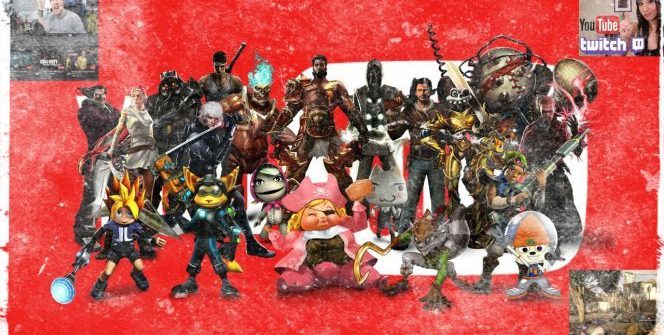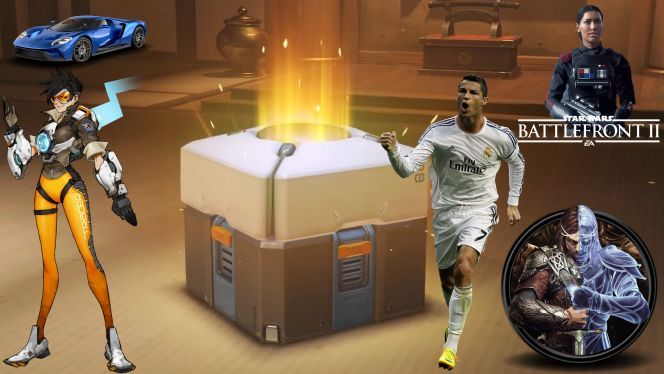OPINION – Polygon‘s Year in Review article had Amy Hennig and Sean Vanaman (the creators of Uncharted and Firewatch, two single-player game/franchises, respectively) talk about how things such as YouTube is the reason why we see less high-budget single-player titles being developed…
Let’s think about this train of thought, though. A viewer, a teenaged one (because they are the ones most likely that use YouTube for… ugh, I hate this term, content digestion) sees a playthrough uploaded by one of their favorites. This playthrough can be edited or not; it doesn’t matter. It can have face cam or not, it doesn’t matter either, but we could go into how the instant gratification means that if the video is more than one part and not short enough, there will be less attention on the later episodes or the later portions of that single video. Anyway, let’s say that this playthrough is of a single-player game, so it has no multiplayer, or it can’t be used without third-party software, such as Hamachi. Let’s imagine that this teen ends up liking the game – will it result in a purchase?
Past
Hennig expressed that back in her days, there was no Twitch (I could have written this site instead of YouTube a paragraph below… or name it as well), but instead, they made self-contained games to be sold in brick and mortar stores, and these games either sold well or not. She doesn’t understand the phenomena of streaming and its effects. Quoting her: „Anecdotally, we’re seeing, for the kind of games that you and I make, that a lot of people don’t want to play them. They just want to watch them being played.” This is an explanation why many, if not all AAA games have a multiplayer component. Not all of them have one, and not all of these multiplayer portions were successful – one of my personal favorites, Spec Ops: The Line, had a tacked-on multiplayer mode, which wasn’t good, but honestly, the game’s experience was not put into that part.
This is why we saw Hennig’s Star Wars game, which was in development at the now-closed Visceral, converted into a multiplayer title under EA Vancouver… because money moves everything, not the experience. Buy loot boxes. Forget the story! You’ll get a few random items for five dollars so you can win. Before I turn this into a five-paged monstrosity, allow me to quote Vanaman’s reply: „What happens when you discover something as a group? There’s 100 people in chat, and the person who’s playing Firewatch turns a corner and finds something spectacular. It’s that feeling of all finding it together that I think people really love.” Hennig’s reaction? „But the people we expect to go buy our games — if we create a $60, somewhat linear, story-driven experience — it feels like a lot of them are opting to watch somebody else play it now.” Vanaman’s response was „I disagree. I think the audience base is so massive that it’s OK.
We gave out thousands — 3,500, 4,500 — of copies of Firewatch to streamers and YouTubers. It’s going to get streamed regardless. And we are very much of the opinion that there are just so many potential customers, like tens, and tens, and tens and tens of millions of potential customers, that the best thing we can do for the game is get as many people to believe that it’s great and entertaining as possible. The hardest thing to do in this business, full-stop, is to get someone to know about your game. It’s harder than making it. It’s harder than shipping it. It’s harder than fixing bugs.”
Present
„I think this may be a big divide between mainstream triple-A and the indie, self-published route. When you’re spending millions on a story-based game that may not be perceived to have long-term value beyond that one playthrough, the question is, “Well, why would anybody buy this if they can just watch somebody play it?”” – Hennig asks. „Right, but why would anybody buy this when they can just steal it? It’s the same thing. I just feel like there’s no data behind those arguments. It’s a very easy argument for publishers to hide behind when they can go and say, “We should be making Overwatch instead.” Hey, man, do that. No problem, man. There is a large, large underserved market, and we’re happy about that. I’m really glad that you guys aren’t making a Firewatch competitor,” Vanaman responded. „The other hot-button issue is whether games should be a medium for players to tell their own stories, and if we should ideally be developing systems to simulate stories rather than telling traditional, authored stories,” Hennig responded.
Why did I quote this part from Polygon? Well, Hennig pointed out the issue which was cleverly noted by Hellblade: Senua’s Sacrifice. There are AAA games for 60 dollars, and then there are the indie, digital-only titles for 1/5 or 1/6 of that cost. There’s Undertale. From Kickstarter to Steam over two years ago in the autumn of 2015. Major success. It got ported to PlayStation 4 and PlayStation Vita last summer – and it’s a single-player game… but it’s still, at its core, an indie development.
There aren’t many ~30 dollar games, which isn’t backed by Sony, Microsoft, or even Nintendo. Let’s not go into re-released games – those are mostly the publisher’s cheap way to get money. Simply put, the middle road is a new one, and Ninja Theory’s Hellblade walked on it… and it’s a success story: it’s now profitable.
Let’s turn to Vanaman’s thought: the publishers just don’t even try to openly, directly (!!!) release such games. Sure, Josef Fares, the unsung meme hero of TGA (if you forgot: he simply said f*ck the Oscars), has A Way Out, which might open this trend at Electronic Arts… but let’s be real here: publishers mostly focus on AAA games and their monetization. EA? Loot boxes. FIFA Ultimate Team, Madden Ultimate Team, etc. Ubisoft? DLC, Rainbow Six Siege microtransactions. Activision Blizzard? Overwatch microtransactions, Call of Duty DLC. You see my point?
Future
Everything depends on the gamers’ trust and wallet. Let’s say we watch Wolfenstein II on YouTube. Sure, it’s not as good as the first game was, but you’ll still see a few purchases because these people planned to do so regardless. You can get it for 20 dollars nowadays. Hennig’s comments include the risk factor – however, she didn’t develop games recently that actually ended up being published. (She commented about it, too. She’s right.)
On YouTube and Twitch, we need to discuss the term influencer. This person has a somewhat big following, which has its taste and opinion formed by the influencing character/personality. These people can end up making a game sell well or tank (an example: a 2002 budget FPS game was reviewed by one of the first amateur game reviewers on YouTube, and it ended up becoming a best-seller… do I need to explain any further? Hell, this game even got an unofficial multiplayer developed for it by two Hungarians.). Good games can end up getting more sales, if said influencer shows without scripting, or even facecam usage that they honestly like the game. If the game is good, there will be demand for it! Also, if it’s priced well, and fairly, then the viewers will almost certainly buy it or at least consider a purchase.
Let’s say that a new game launches with just a single-player mode – it doesn’t matter what platform gets it. If the influencer misses a few things, one or two viewers might just buy that game to find the secrets! As Vanaman said: tens of millions (or, with China, HUNDREDS of millions) of potential customers are out there, and with just minimal investment (giving out a few thousand copies of Firewatch), they could be turned into customers. If there’s no NDA for the influencer to abide by (as in, rate the game only positively), then it’s fair play.
I can understand Hennig’s worries that not a lot of people end up buying the game. Sometimes there’s just no money for it. It’s possible. However, not everyone watches videos constantly on YouTube or tunes into streams on Twitch. As Vanaman says, the single-player projects are mostly depending on the publishers… who need money the most. The different customer trends mean they had to change their route. With older games (which you can’t even buy new anymore), it’s not an issue: the publisher sees no money from that. Everyone should decide on their own if they are interested in that single-player game or not.
I’ll say this: single-player games need to be supported to help them continue being made. Think about it: not everyone plays games online. (In fact, I never do.) There are still people who remember how it feels to play with a friend in the same room. And with single-player titles, these memories could be relived.
Source: Polygon
-V-


















![[TGA 2025] Diablo IV: Lord of Hatred: A Character Class Returns! [VIDEO]](https://thegeek.games/wp-content/uploads/2025/12/theGeek-diablo-4-expansion-2-lord-of-hatred-paladin-skovos-horadric-cube-300x365.jpg)
Leave a Reply